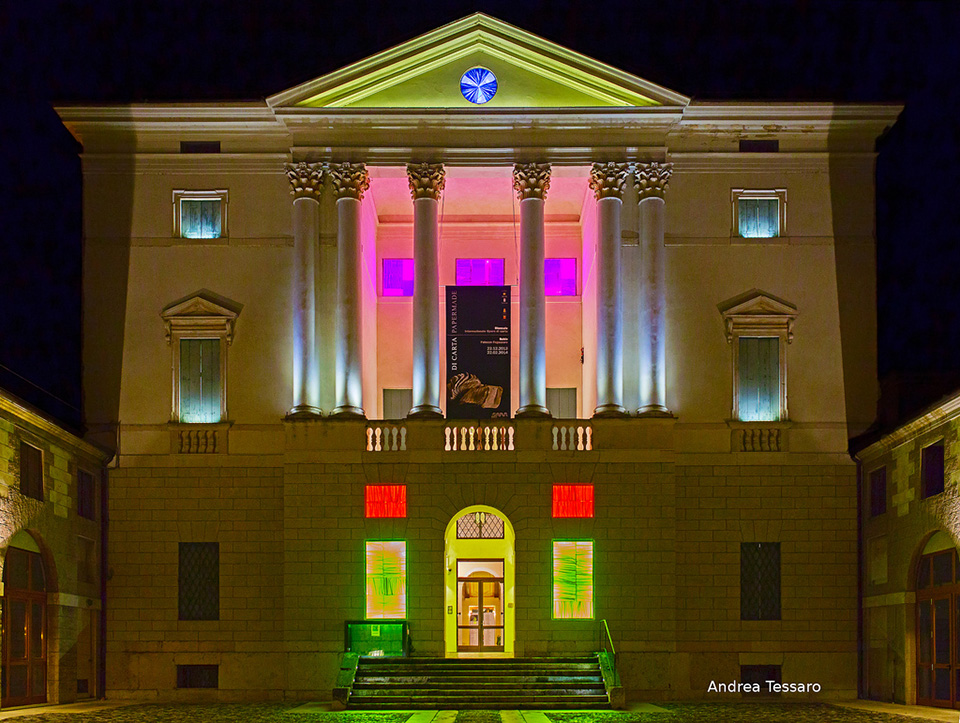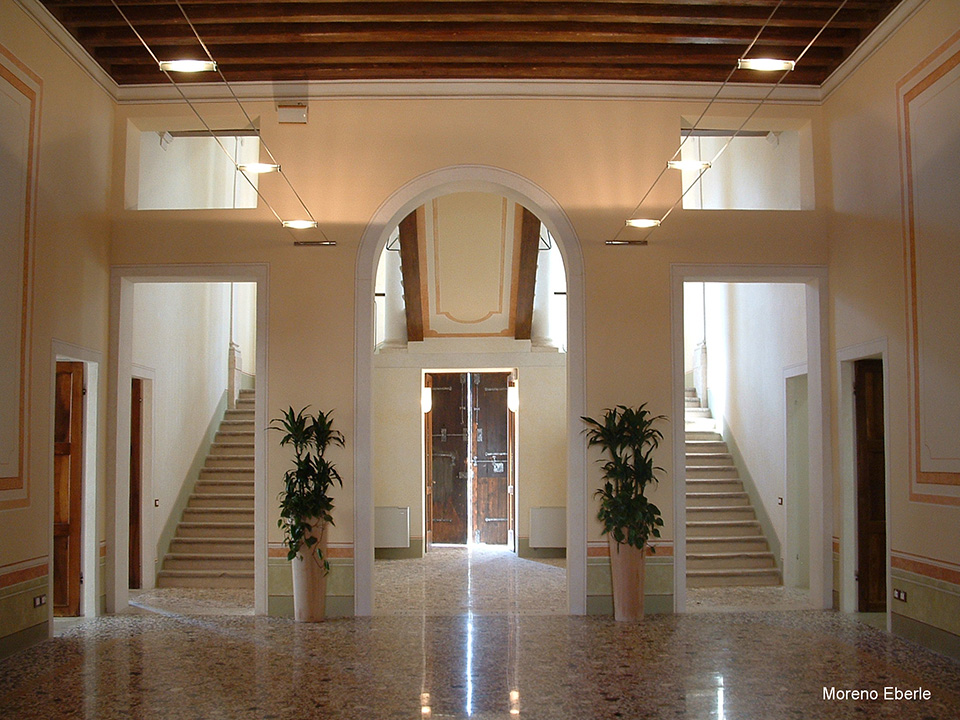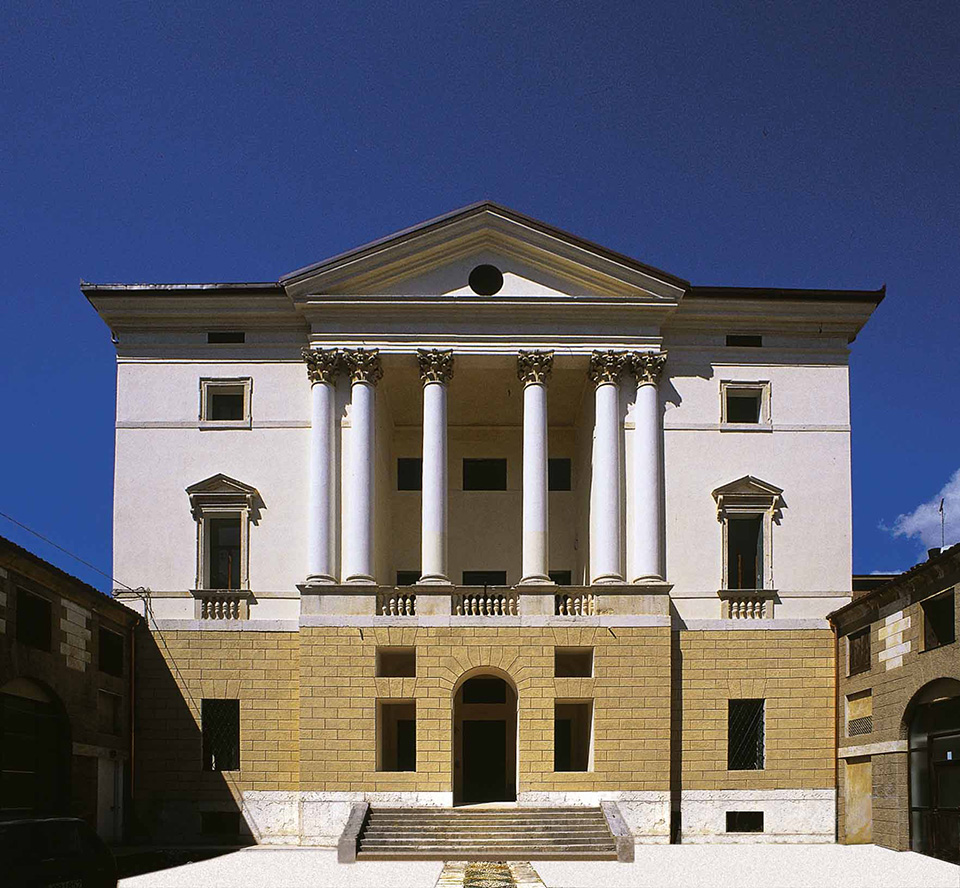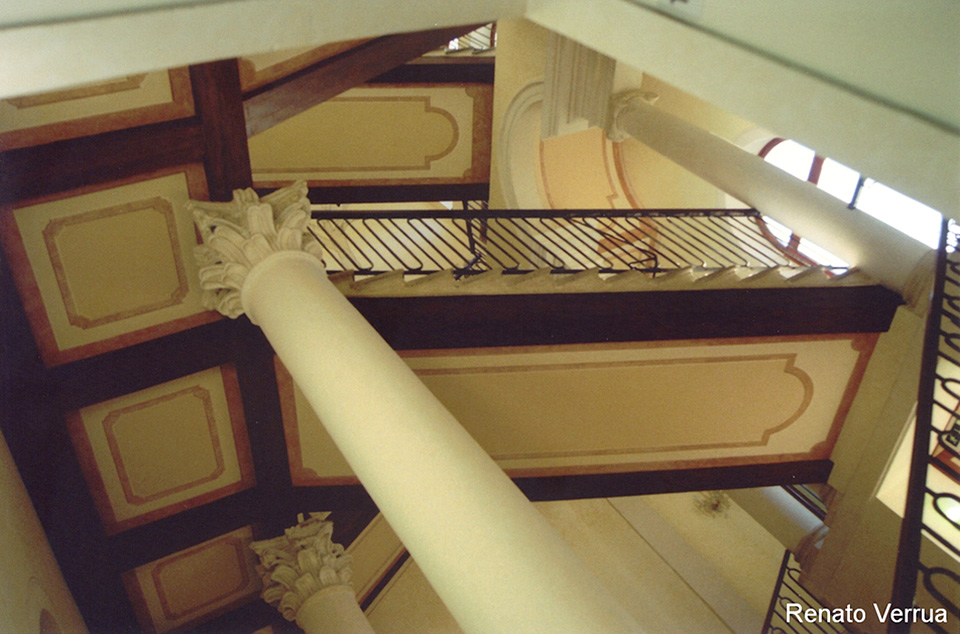Palazzo Fogazzaro was built in 1810 according to a project by Lugano architect Carlo Barrera (1759 – 1837) who, here in Schio, also created Palazzo Garbin as well as working on the Duomo di San Pietro, Schio’s main church.
The Palazzo, overlooking Via Pasini, formerly Via Oltreponte and also known as “Delle Monache”, is a building in the style of Palladio with portico and superimposed loggia; it’s located on a site previously occupied by a wool carding factory, itself property of the Fogazzaro family.
The Fogazzaro family arrived in Schio at the start of the seventeen hundreds, founding a wool factory that quickly became very important, to the point of being included, in 1796, in the list of 25 “privileged” factories that had more than one hundred employees. The man who requested the construction of the new Palazzo, Mariano Fogazzaro, great-grandfather of the writer Antonio, had been chief magistrate in Schio in 1809, but with the events of 1815 decided to move to Padova, while his daughter and stepson remained in Schio.
Palazzo Fogazzaro was originally used for housing and to store wool and grains, which were also part of the family business. In the nineteen hundreds it became the headquarters for various institutions and organisations: it had become city property in 1960 and to this day accommodates various cultural and educational services like the Servizio Cultura, Informagiovani and a study hall; as a civic museum it hosts temporary exhibitions.





